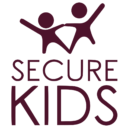A right based approach to children’s involvement in DRR
When developing this guide, consultations with experts in both disaster risk reduction (DRR) and child participation, from seven countries around the Baltic Sea, were conducted. One aspect that permeated the discussions was the experience that they couldn’t convince other colleagues to work with children. Here, a right-based argument is articulated.
The primary reason why children should be included in DRR activities is because they have a right to be a part of these activities. In other words, including children is not voluntary, it is a legally binding obligation for the people working with and making decisions about DRR.
Naturally, some questions might arise for anyone who hasn’t heard of this right before: Why should children be involved in these issues?
This obligation to involve children comes from the United Nations Convention on the Rights of the Child (UNCRC). The UNCRC is a human rights treaty. The 54 articles in this treaty describe children’s rights and what must be done to uphold these rights. Article 12 of the convention says:
“State partiers shall assure to the child who is capable of forming his or her own views the right to express those views freely in all matters affecting the child, the views of the child being given due weight in accordance with the age and maturity of the child” (Article 12, UNCRC).
Article 12 describes that children have a right to participate in all matters affecting them. Children and young people have been disproportionately affected by disasters, and their exposure is expected to increase in the coming years. Thus, respecting children’s views in the context of DRR is not just a model of good pedagogical practice, but a legally binding obligation, descending from the ratification of the UNCRC.
To sum up, the main reason why children must be allowed to participate in DRR-related activities is because they have a right to do so. Rights are inviolable, meaning that they must be fully respected. Therefore, children must be given the opportunity to participate in DRR-related activities. However, it is a right and not a duty, and children should not be forced to participate.
Other arguments for child participation in DRR
As the previous section outlined, the primary reason to involve children in DRR-related activities is that they have a right to participate in DRR. This, however, does not mean that other reasons for including children in these activities are useless. When discussing with decision-makers, describing the positive utility of involving children can be a convincing approach. Pointing out the positive consequences of involving children can even be more effective than pointing to duties on behalf of the decision-maker.
We have collected a series of resoruces that highlights these consequences.
Tools and resources that will help you address the questions:
1. Why Include Children?
CDP Online College
This resource collects several arguments outlining the importance of child participation in disaster risk reduction.
2. Child and Youth Participation During Crisis: Recommendations for Decision-Makers in the Nordic Region
Nordic Welfare Centre, p.16-20
This report shares additional arguments from young people about the importance of child participation in crises.
3. Benefits of Child Participation: An Overview for Organisations
Emerging Minds
This resource highlights the benefits of child participation from various perspectives, inlcuding organisational, soceital, and children.
4. Guidelines for Setting Up a Child Advisory Board
Commissioned by CBSS, Created by Eurochild
A step-by-step guide on how to establish a child advisory board.
5. Working with and for Youth: Practical Ideas to Foster Youth Engagement
OSCE
Report aimed at the inclusion of youth in work on peace and security..
6. Children’s Participation in Decision-Making: Why, When, and How
Save the Children
A comprehensive guide on the importance of child participation in decision-making, including the best practices and timing for it.
7. The Nine Basic Requirements for Meaningful and Ethical Children’s Participation
Save the Children
Nine basic requirements for ensuring meaningful and ethical participation of children.
8. Disaster Risk Reduction in School Curricula: Case Studies from Thirty Countries
UNESCO
This report provides case studies on integrating disaster risk reduction into school curricula across thirty countries.
9. Engaging Children in Decision Making – A Guide for Consulting Children, p. 5
Victorian Local Governance Association (VLGA)
This report summarises several reasons for including children in bullet point form.
